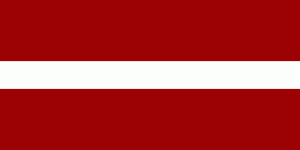
Latvia
Quick reference
General issues: Republic 1918-1940, Soviet Socialist Republic within the Soviet Union 1940, Republic 1991-Present
Country name on general issues: Latvija, Latwija
Special issues:
- Local issues Wenden 1862-1901
- Occupation issues WWI
- Oberbefehlshaber Ost 1916-1918
- Local issues Libau 1919
- West Russian Army 1919
- Local issues Eleja 1919, Smiltene 1919
- Occupation issues WWII
- Latvia 1941
- Reichskommissariat Ostland 1941-1944
- Courland 1945
Currency: 1 Ruble = 100 Kapeikas 1918-1923, 1 Lats = 100 Santimi 1923-1940, 1 Ruble = 100 Kopeks 1991-1992, 1 Latvian Ruble = 100 Kopeks 1992-1993, 1 Lat = 100 Santimi 1993-2014, 1 Euro = 100 Eurocent 2014-Present
Population: 1 503 000 in 1919, 1 965 000 in 2016
Political history Latvia
Latvia in the Russian empire and WWI
Latvia is one of the Baltic states located in northern Europe. Latvia became part of the Russian empire in the 18th century. The Latvians are a Baltic people – an ethnic minority in the Russian empire as a whole. In – parts of – three governates of the Russian empire, the Latvians were the majority of the population.[1]In imperial Russia, a governate was the administrative level just below the national level. The governates with a Latvian majority were Courland, the southern part of Livonia and the Latgale region of Vitebsk. Although Latvians were the majority of the population, Baltic Germans[2]Germans had settled in the Baltics since the 12th century and gradually grown to be the elite in Baltic societies. formed the elite in Latvian society. Latvian nationalism developed in the 19th century.
WWI came to Latvia, when Germany occupied the western part of Latvia in 1915. The front stabilized, until 1917, when Germany advanced further east to occupy Riga. Just before the signing of the treaty of Brest-Litowsk, in which Russia reneged its claims to the Baltic states, Germany occupied the remainder of Latvia in February 1918. The territories occupied by Germany were brought under military administration as part of the area administered by the ‘Oberbefehlshaber Ost’. [3]The Oberbefehlshaber Ost was the supreme commander of the German forces on the Russian front during WWI. For a map of the area controlled by the Oberbefehlshaber Ost, please refer to the map of Germany 1914-1938. German occupation formally ended with the German capitulation in November 1918. German forces were effectively withdrawn in the course of 1919.
The Latvian war of independence
Latvia declared independence as the republic of Latvia in November 1918. The republic claimed – parts of – the governates in which the Latvians formed the majority of the population. What followed, is called the Latvian War of Independence. The dynamics of the Latvian War of Independence were strongly influenced by the Russian Civil War. The Russian Civil War was fought between the Bolsheviks – the Reds – and those that opposed the Bolsheviks – the Whites. Furthermore, the ambitions of Germany and the Baltic Germans to form an independent German state in the Baltics were a major factor in the course of events. The Latvian War of Independence ended with the Treaty of Riga, signed by Latvia and Russia in August 1919, through which Russia recognized Latvian independence. The Latvian-Russian border was agreed upon as part of the treaty. The borders with Lithuania and Estonia were settled in 1921 and 1923 respectively. The border with Poland was settled in 1929.
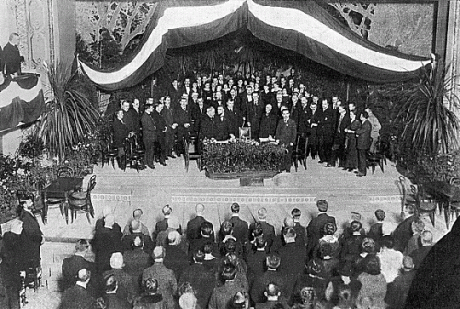
November 1918 – The proclamation of independence.
A closer look at the main actors in the Latvian War of independence, aside from Latvian forces:
- The Red Russian forces, that invaded Latvia in November 1918. The Russians established the oppositional Latvian Socialist Soviet Republic. The Red Russian forces were pushed back in March 1919 and fully driven out of the country by February 1920.
- The Baltische Landeswehr[4]Baltic National Defense – an army formed in December 1919, composed of Germans and Baltic Germans, that, initially, supported the Latvian government pushing back the Red Russian forces. In April 1919, however, the Landeswehr turned against the Latvian government, forming its own government to further the establishment of a Baltic German state. The Landeswehr was defeated and dissolved in July 1919.
- The West Russian Army – an army led by Colonel Pavel Bermondt-Avalov, that was nominally fighting under the White Russian flag, but consisted, largely, of Germans and Baltic Germans and fought to further their interests. The West Russian Army was defeated in November 1919 – the remainder of the army retreated to Lithuania where the army was dissolved by December 1919.
- The Estonian forces, that, during the Estonian War of Independence, had moved into Latvia in May 1919 to secure the southern border of Estonia. The Estonian forces played a decisive part in defeating the Baltische Landeswehr and the West Russian Army.
- The Polish forces, that, as part of the 1919-1921 Polish-Soviet War,[5]In the Polish-Soviet War, Poland and Soviet Russia tried to extend their territory. Poland came out victorious, extending its borders east. The territory, thus gained by Poland, was lost to the Soviet Union after WWII. supported Latvia to drive the last Red Russian forces from Latvia in February 1920.
The interwar period and WWII
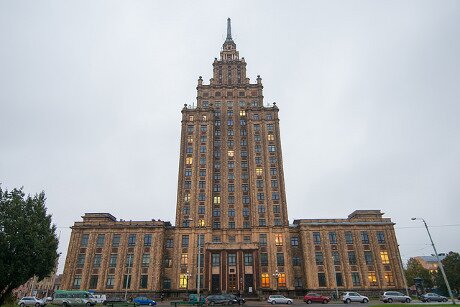
The Latvia Academy of Sciences is a classic example of the Soviet era architecture.
Independent Latvia was, initially, governed as a parliamentary republic. In 1934, by way of a coup, the constitution was suspended and the country was ruled by a dictatorship until 1940. The main focus, during the interwar period, was on the the transfer of the vast land holdings of Baltic Germans to Latvian farmers and investments in industrial development.
In 1939, Germany and the Soviet Union signed the Molotov-Ribbentrop Pact, defining their respective spheres of interest in eastern Europe. Russia, subsequently, invaded Latvia in June 1940. In July 1940, the Latvian Soviet Socialist Republic was formed, that, in August 1940, was annexed to the Soviet Union. Soviet rule would last a year. In June 1941, Germany invaded the Soviet Union and occupied Latvia in June and July 1941. After a period of military administration, Latvia came under civil administration, in September 1941, as part of the ‘Reichskommissariat Ostland’.[6]The Reichskommissariat Osland included the Baltic states and parts of Poland and Belarus. For a map of the area administered by the Reichskommissariat Ostland, please refer to the map of Germany 1938-1945. As the tables turned in WWII, the Soviet Union drove back the German forces and most of Latvia was regained by the Soviet Union in October 1944. The Soviets, in their advance, bypassed the German forces in what is called the ‘Courland Pocket’. The Courland Pocket was regained by the Soviets in May 1945.
The Latvian Soviet Socialist Republic
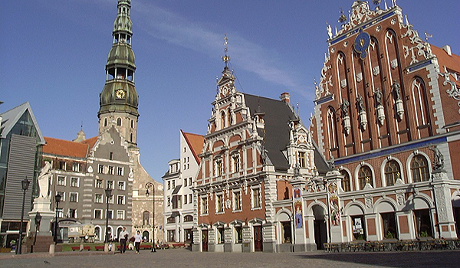
The Main Square in the Old Town of Riga, the capital of Latvia.
Reestablished as the Latvian Soviet Socialist Republic, Latvia was now fully integrated into the Soviet Union. In 1944, the border was adjusted. Resistance against Soviet rule was quenched by the mid 1950’s and significant numbers of Latvians were deported. Although de jure an independent state with its own governmental institutions, de facto Latvia was ruled from the Kremlin in Moscow. Private holdings were nationalized and collectivized. Ethnic Russians settled in Latvia, thus changing the demographics of the country.
The 1980’s brought liberalization. Political parties were formed which asserted Latvian identity. In the late 1980’s, mass demonstrations called for independence. The Latvian parliament changed the designation of Latvia from ‘Soviet Socialist Republic’ to ‘Republic’ in 1990 and called for negotiations about independence. When the Soviet Union broke up in 1991, full independence was gained.
Independent Latvia to date
Since independence, Latvia is, again, governed as parliamentary republic. While many of the former parts of the Soviet Union stayed closely affiliated with the Russian Federation in the Commonwealth of Independent States, Latvia turned west – as did the other Baltic states. Latvia joined NATO and the European Union in 2004.
Economically, by way of privatization of state holdings and market-oriented reforms, Latvia developed into a free market economy. The Latvian economy has, although with intermediate recessions, been a fast growing economy. Services are the most important sector, representing 74% of the GDP, followed by industry with 23% and agriculture with 3%. On the United Nations Human Development Index, Latvia ranks as a Very High Development Country. The population was 77% Latvian before WWII. Today, 61% of the population is Latvian and 26% Russian. The large Russian minority causes frictions in Latvia – and with Russia.
Postal history Latvia
Latvia in the Russian empire and WWI
Latvia as part of the Russian empire used Russian stamps. A local postal service operated in the town of Wenden[7]Modern day Cēsis and issued stamps between 1862 and 1901 – the service closing in 1903. The Wenden issues were – all but the last- inscribed in German. The Wenden local service stood apart from the Zemstvo services that operated across the Russian empire.[8]The Zemstvo was a form of local self government that was authorized by imperial decree in 1864. Zemstvos operated a number of public institutions, including local postal services complementary to the national service. As there were no Zemstvos in the Baltic states, the Wenden local service is, technically, not to be considered a Zemstvo service. For all practical purposes it may have functioned as the Zemstvo posts did. Russian stamps were, during the German occupation in WWI, superseded by the issues for the Oberbefehlshaber Ost – German stamps overprinted ‘Postgebiet Ob Ost'[9]Postal area Ob. Ost . Between the German capitulation and the retreat of the German forces, a German field post office continued to process civilian mail to Germany and abroad in Libau[10]Modern day Liepaja . As the stock of ‘Ob Ost’ stamps ran out, German stamps were overprinted ‘Libau’. The office functioned until March 1919.
The republic of Latvia and the Soviet Socialist Republic of Latvia
The republic of Latvia issued its first stamps in 1918. Paper shortages necessitated this first issue to be printed on any paper available to the printers. Thus, the first issue was printed on the back of German military maps. Likewise, in 1919 and 1920 stamps were printed on half finished print runs of banknotes. Thus, banknotes prepared for the Workers’ and Soldiers’ Council in Riga[11]The Workers’ and Soldiers’ Council was a short live form of Bolshevik government set up in Riga. and for the West Russian Army were used. In 1919, local issues appeared in the towns of Eleja and Smiltene.[12]Listed in the Michel catalog. During the War of Independence, stamps were also issued by the West Russian Army. Several sets of overprinted Russian stamps appeared in October and November 1919. One set of definitives was prepared, but was not released before the demise of the West Russian Army. The republic of Latvia issued stamps until 1940 – the last set being a set of definitives showing the coat of arms of the republic. The Latvian Soviet Socialist Republic issued two additional values to the last set of the republic in August 1940 and a set of a new design of which the first stamps appeared in October 1940 – the new design shows the coat of arms of the Latvian Soviet Socialist Republic. From December 1940, Soviet stamps were brought into circulation.
WWII
Under German occupation during WWII, initially, the stamps of Germany were used without overprint. In July 1941, stamps were issued for use in Latvia – Russian stamps overprinted ‘Latvija – 1941 – 1. VII’. From November 1941, the stamps issued by the Reichskommissariat Ostland were brought into circulation – German stamps overprinted Ostland. German stamps without overprint remained valid for use throughout the German occupation, although they were only available from post offices until the introduction of the issues of the Reichskommissariat ‘Ostland’. When the Soviet Union recaptured Latvia in 1944, Soviet stamps came back into use. In the Courland Pocket – bypassed by the Soviets in 1944 – the postal service continued to operate under German authority. Provisionals for use in the Courland Pocket were issued in April 1945 – German postage and field post stamps overprinted ‘Kurland’ and a new denomination.[13]Listed in the Michel catalog.
Modern day Latvia
After independence, Latvia issued its first stamps in October 1991 – showing the coat of arms of the republic. The first stamps were issued in the Soviet currency. The first stamps in the Latvian ruble appeared in October 1992. Between 1991 and 1993 several sets of provisionals were issued – Soviet stamps overprinted ‘Latvia’ and a new denomination. Soviet stamps remained valid until the June 1992. Independent Latvia issues a blend of stamps with themes of national interest and themes aimed at the thematic collectors market.
Album pages
← Previous page: KareliaNext page: Lithuania →

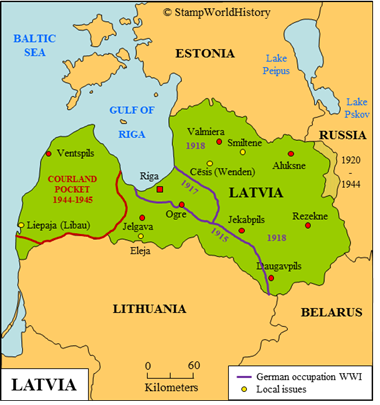
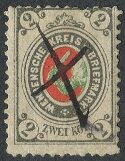
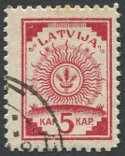
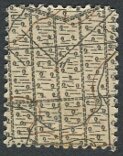
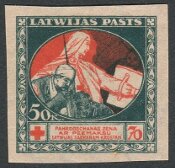
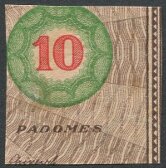

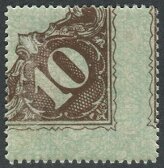
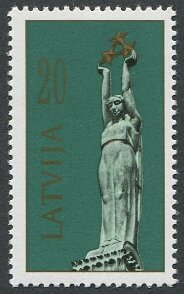
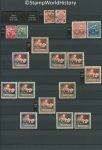
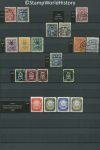
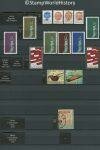
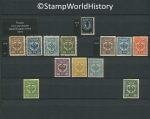
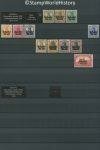
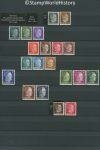
Gerben, perhaps the following information will be usefull for you.
1. Mich#24. This stamp was printed and issued in North Latvia for use in North Latvia. I have seen more information about this stamp, but I cant remember where.
2. The state inscription in the Latvian stamps also was Latwija (~1919), Latwijas pasts (~1919), Latvijas PSR (1940). Gedi
Gedi
Thanks. I now see Michel makes a note of this. One could of course speculate that this was because northern Latvia, at the time, was the part of Latvia under effective control of the government. But that would be speculation. In case you find anything more, please share. I added Latwija to the country designations.